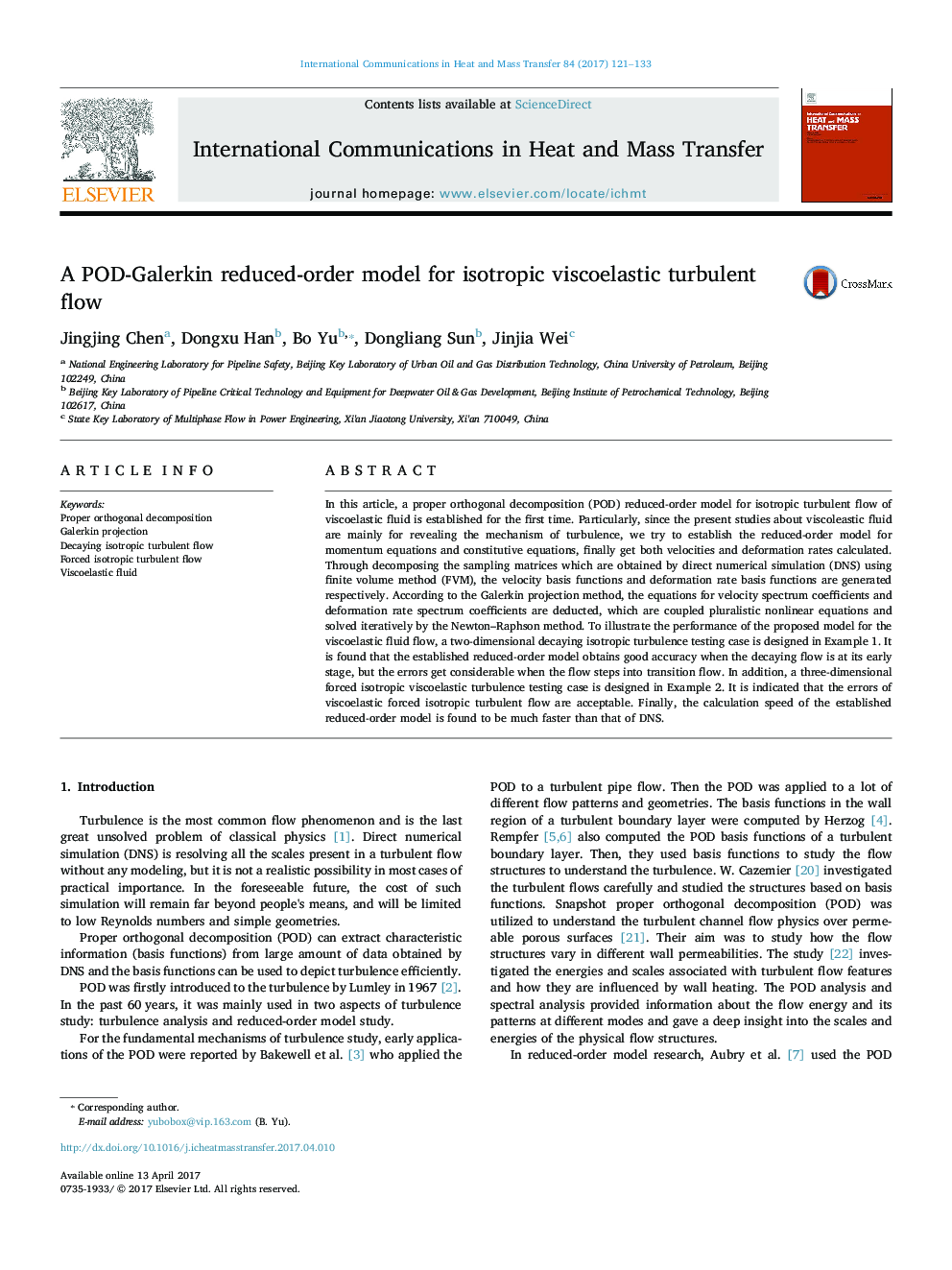| Article ID | Journal | Published Year | Pages | File Type |
|---|---|---|---|---|
| 4992963 | International Communications in Heat and Mass Transfer | 2017 | 13 Pages |
Abstract
In this article, a proper orthogonal decomposition (POD) reduced-order model for isotropic turbulent flow of viscoelastic fluid is established for the first time. Particularly, since the present studies about viscoleastic fluid are mainly for revealing the mechanism of turbulence, we try to establish the reduced-order model for momentum equations and constitutive equations, finally get both velocities and deformation rates calculated. Through decomposing the sampling matrices which are obtained by direct numerical simulation (DNS) using finite volume method (FVM), the velocity basis functions and deformation rate basis functions are generated respectively. According to the Galerkin projection method, the equations for velocity spectrum coefficients and deformation rate spectrum coefficients are deducted, which are coupled pluralistic nonlinear equations and solved iteratively by the Newton-Raphson method. To illustrate the performance of the proposed model for the viscoelastic fluid flow, a two-dimensional decaying isotropic turbulence testing case is designed in Example 1. It is found that the established reduced-order model obtains good accuracy when the decaying flow is at its early stage, but the errors get considerable when the flow steps into transition flow. In addition, a three-dimensional forced isotropic viscoelastic turbulence testing case is designed in Example 2. It is indicated that the errors of viscoelastic forced isotropic turbulent flow are acceptable. Finally, the calculation speed of the established reduced-order model is found to be much faster than that of DNS.
Related Topics
Physical Sciences and Engineering
Chemical Engineering
Fluid Flow and Transfer Processes
Authors
Jingjing Chen, Dongxu Han, Bo Yu, Dongliang Sun, Jinjia Wei,
